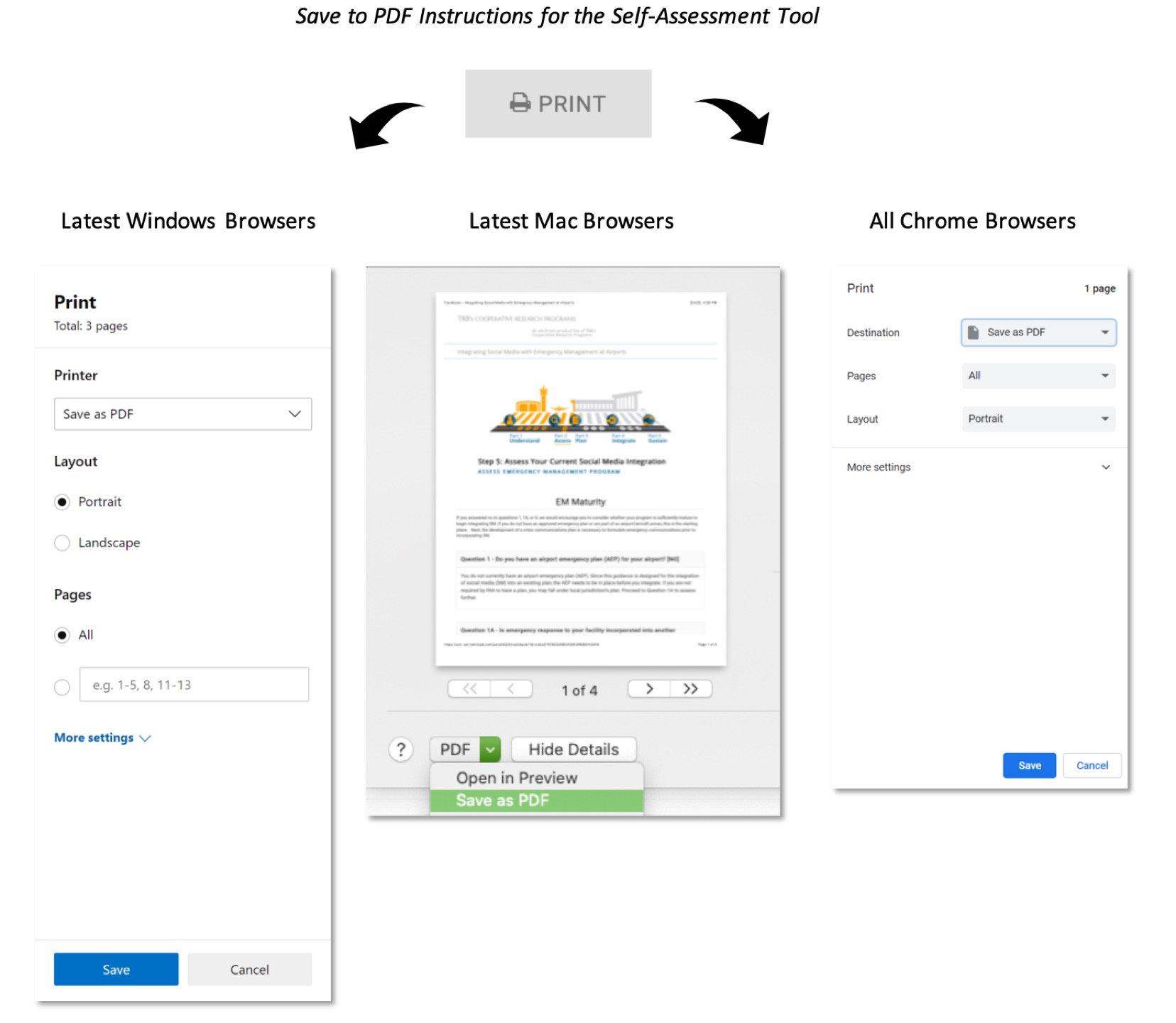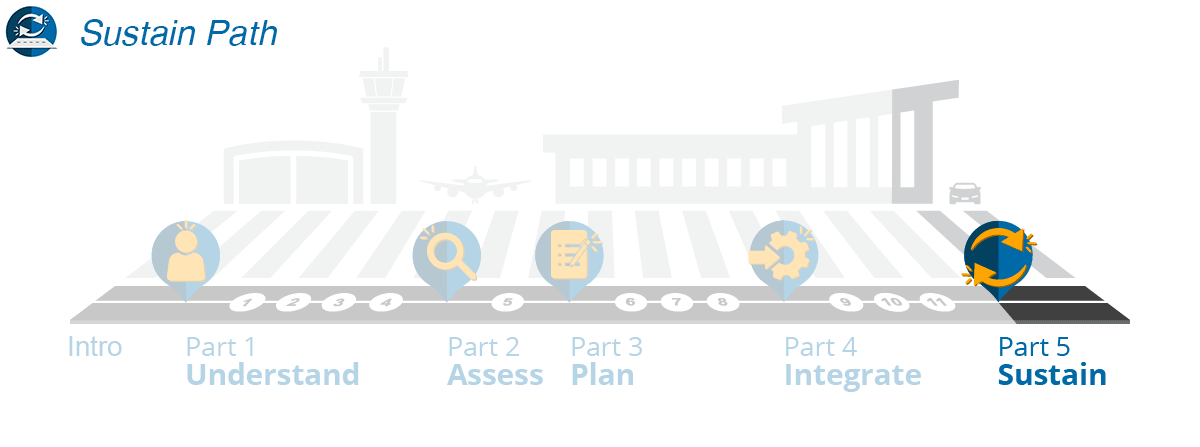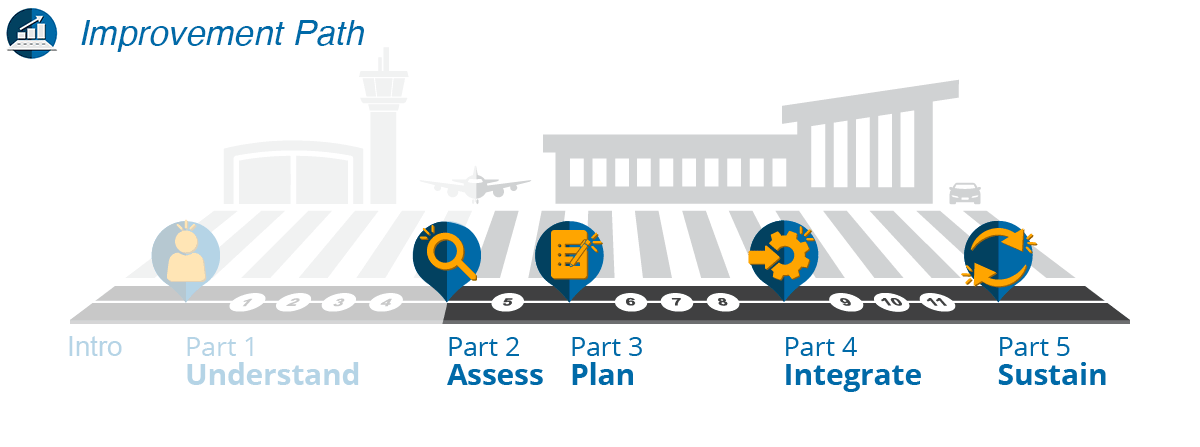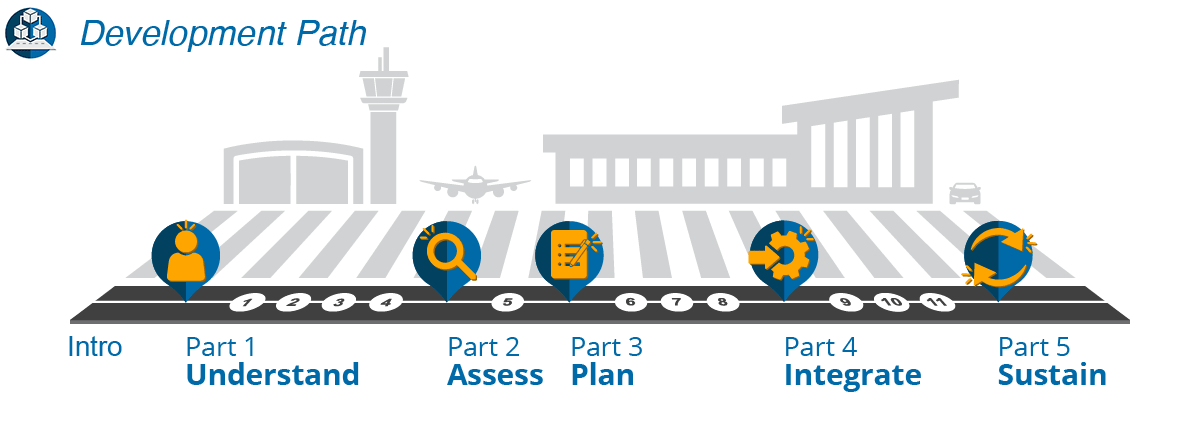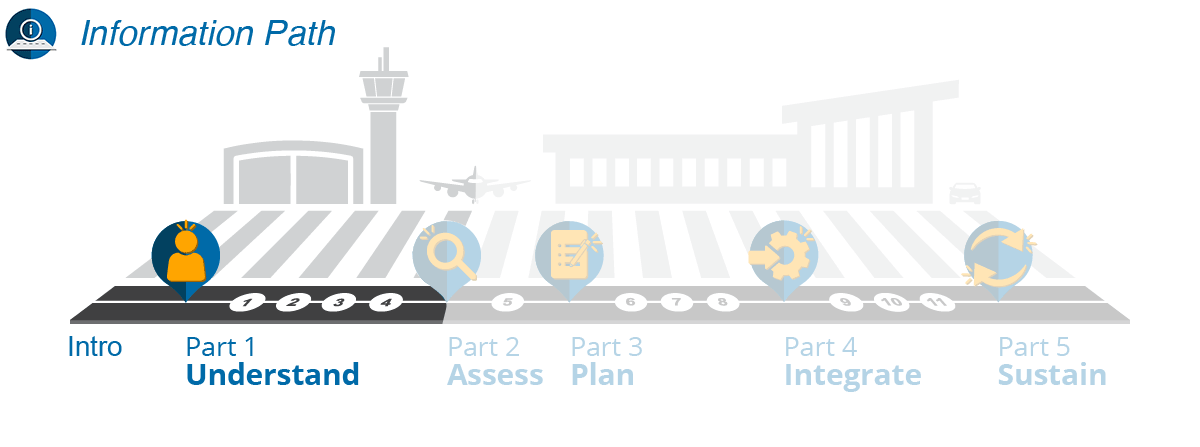Resources
Glossary
Common Terms Used Throughout This WebResource
Social Media: The Merriam-Webster dictionary defines social media (SM) as “forms of electronic communication (such as websites for social networking and microblogging) through which users create online communities to share information, ideas, personal messages, and other content (such as videos).”1
SM Channel: An online channel that includes capabilities for public posting and private group posting and messaging. Most SM channels, such as Twitter, Facebook, Instagram, and others, provide access to their websites through the use of a computer and browser and/or a mobile application.
SM Profile: An account on an SM channel tied to an individual user. An SM profile will link other users to any content publicly posted by the user and give them the option of following the user’s profile. Most channels also provide the ability for organizations such as airports to have a social profile on their site.
SMEM: The integration of SM with emergency management (EM).
SM Management Functions: When considering how an organization can leverage SM, most industry professionals generally refer to the following four functions: listening, engagement, publishing, and reporting.
SM Listening: The process of monitoring digital conversations to understand what airport visitors, passengers, internal and external stakeholders, etc., are saying about the airport. Filtering tools can be used to facilitate listening.
SM Engagement: The process of connecting directly with individuals in response to questions and/or comments. Engagement can be performed on SM channels by replying to public comments or directly messaging with users. It can also encompass the use of private secure responder messaging channels to facilitate emergency response.
SM Publishing: The process of proactively posting/communicating with the public and stakeholders to make announcements or provide updates. The goal is to communicate well enough that the audience pays attention to what is being said. Publishing, coupled with other forms of communication (traditional media, public address announcements, etc.) can broaden your reach.
SM Reporting: The process of consolidating and internally distributing the information gathered through the other three functions. This information can be useful during real-time situations to assess the effectiveness of your engagement and publishing activities and to focus your listening. Reporting is also useful for post-event evaluations and process improvements.
Mass Notification System (MNS): These are platforms used by organizations to send one-way messages to quickly communicate with a large set of stakeholders.
Private Secure Responder Messaging Channel: This is a type of channel with SM-like capabilities that allows for secure publishing and engagement between those responding to an incident.
Detailed Social Media and Emergency Management Glossaries
The following are two examples of detailed glossaries of SM and EM terms:
- HubSpot, Inc. “Social Media Definitions: The Ultimate Glossary of Terms You Should Know.” accessed September 13, 2019. https://blog.hubspot.com/marketing/social-media-terms.
- Blanchard, Wayne. Guide to Emergency Management and Related Terms, Definitions, Concepts, Acronyms, Organizations, Programs, Guidance, Executive Orders & Legislation. https://training.fema.gov/hiedu/docs/terms%20and%20definitions/terms%20and%20definitions.pdf.
REFERENCES
1. “Social Media,” Merriam Webster, Inc., accessed September 13, 2019, https://www.merriam-webster.com/dictionary/social%20media?src=search-dict-box.
